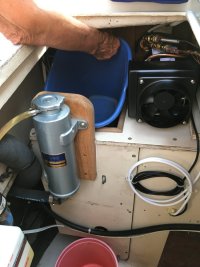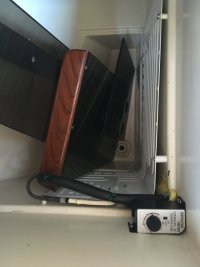Bolo
Contributing Partner
A lot of Ericson sailboats ended up with a Adler/Barbour refrigeration conversion in the ice boxes and mine was one of them. It works OK, probably draws more power than the newer Isotherm models, but it has a rectangular "box" type evaporator that is mounted in top opening to the refrigerator box. It's can freeze anything that can fit in it but mostly for me it just gets in the way and we only keep the occasion frozen food or my vodka in it. I like to drink my vodka neat. A lot of times various items (catsup, mustard, soy sauce bottles, etc.) can also hide under the box evaporator making them hard to find and retrieve.
So I was wondering if a newer "flat" or even "L" shaped evaporator from Domestic who now seems to sell Adler/Barbour parts, can replace the freezer box opening up access to what's inside. Problem is, of course, age. The existing Adler/Barbour unit is at least 30 years old (I'm guessing) and I'm not sure if any newer evaporators or even cold plates will have the same fittings or if the gas inside is compatible.
Has anyone ever changed out their box type freezer/evaporator to a flat or "L" shaped one?
So I was wondering if a newer "flat" or even "L" shaped evaporator from Domestic who now seems to sell Adler/Barbour parts, can replace the freezer box opening up access to what's inside. Problem is, of course, age. The existing Adler/Barbour unit is at least 30 years old (I'm guessing) and I'm not sure if any newer evaporators or even cold plates will have the same fittings or if the gas inside is compatible.
Has anyone ever changed out their box type freezer/evaporator to a flat or "L" shaped one?



